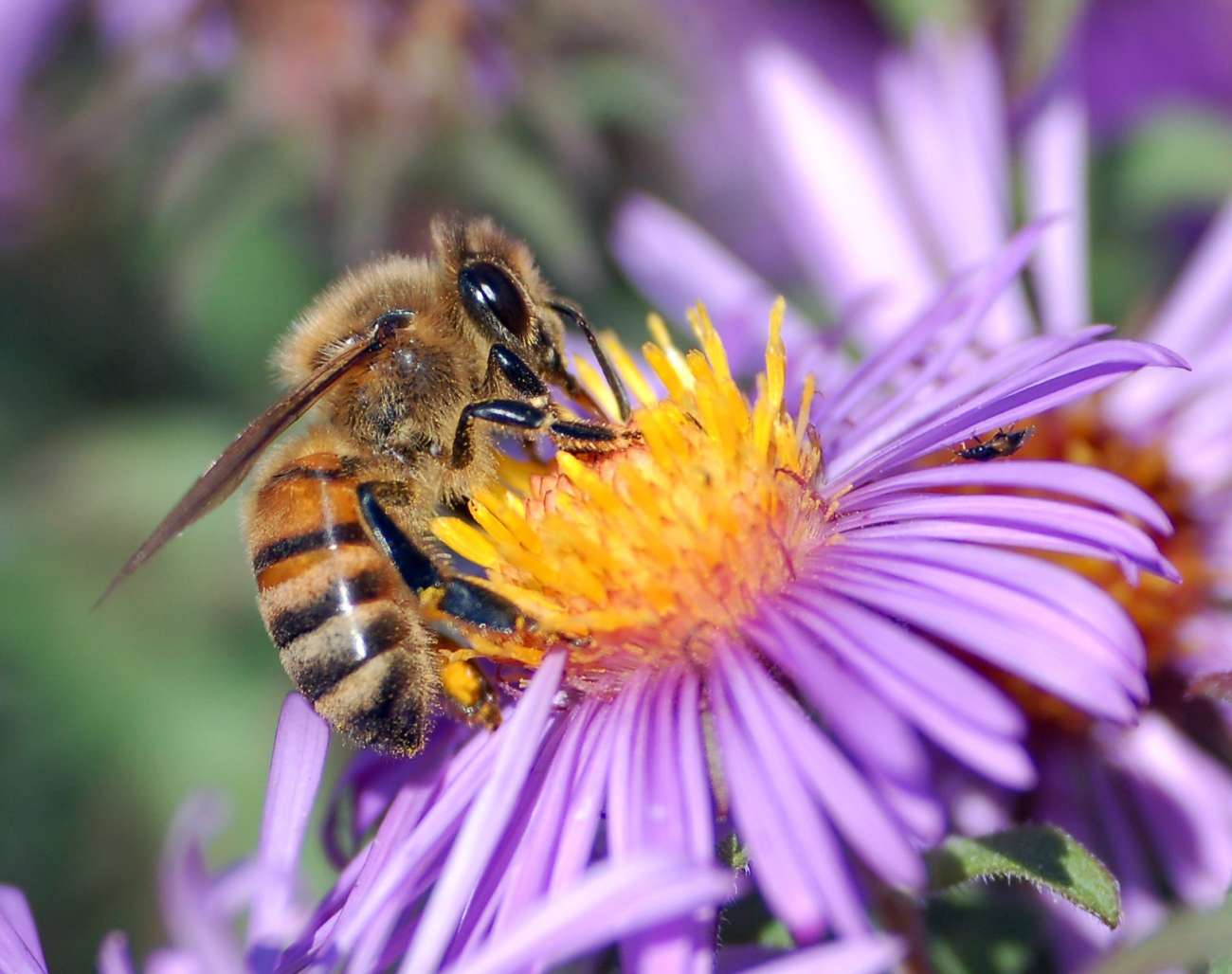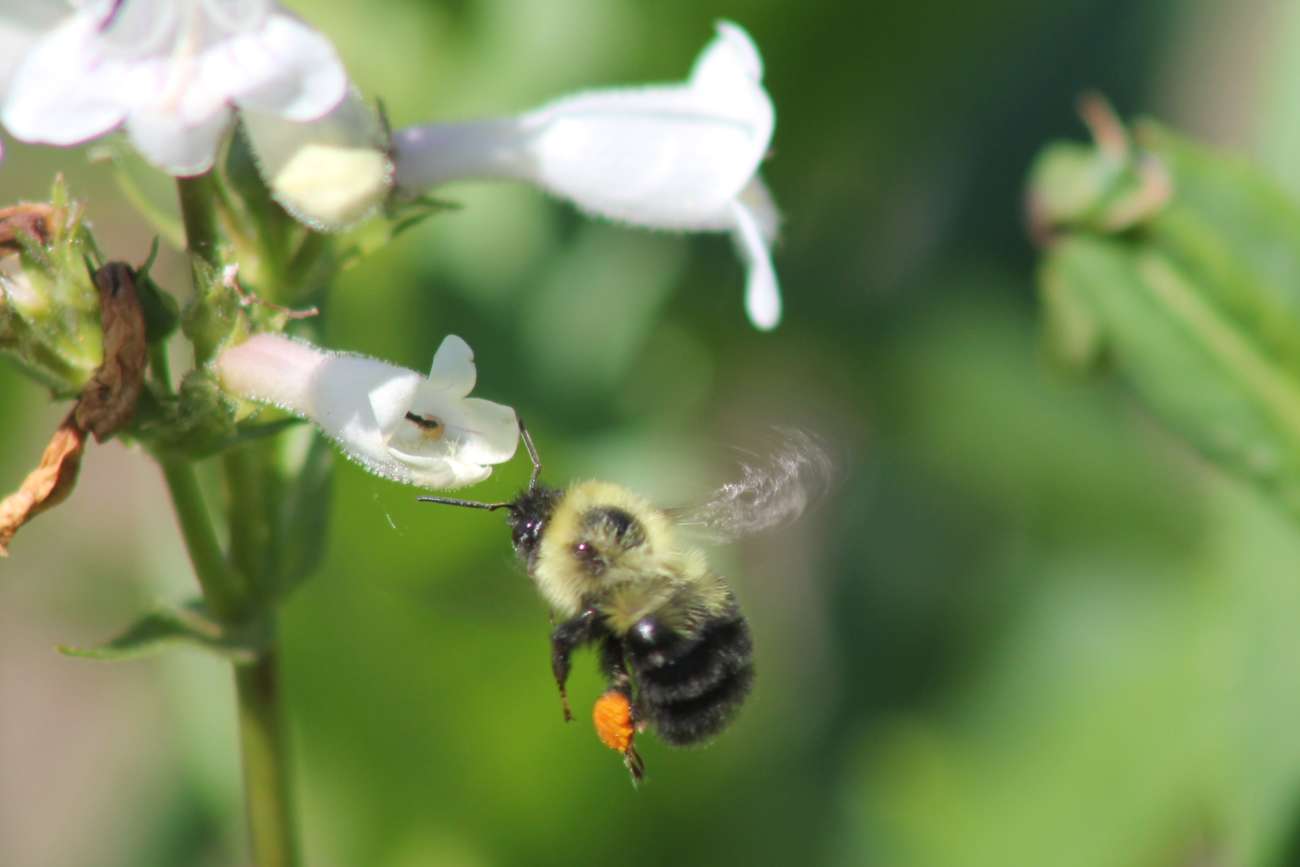Pollinator Profile: Bees

Bees are the best documented pollinators in natural and agricultural landscapes. A wide range of plants in the Aster and Rose Families, blueberry crops, and tomatoes are just a few plants that benefit from bee pollinators. Most of us are familiar with the colonies of honey bees that have been the workhorses of agricultural pollination for years in Canada. They were imported from Europe almost 400 years ago and continue to be managed for honey production and pollination services.
There are over 800 species of native ground and twig nesting bees in Canada. Most of these bee species live a solitary life; a minority are social and form colonies or nest in aggregations. Native bees visit and pollinate many crops; in many cases they are better at transferring pollen than honey bees. Our native bees can be encouraged to do more to support agricultural endeavours if their needs for nesting habitat are met and if suitable sources of nectar, pollen, and water are provided. Bees come in a variety of body shapes and sizes, and even have tongues of different lengths. Native bees visit the widest range of flowers and crops of any pollinator group.
Bumble bees (Bombus spp.) form small colonies, usually underground making use of old rodent burrows or dense thatches. They are generalists, feeding on a wide range of plant types from May to September and are important pollinators of tomatoes and blueberries.

Sweat bees (family Halictidae) are medium to small-sized, slender bees that commonly nest underground. Various species are solitary while others form loose colonies, nesting side-by-side. Other common solitary bees include carpenter bees (Xylocopa virginica), which nest by chewing into wood; mining bees (Andrena spp.), which nest underground and are common in the spring; leaf-cutter bees (Megachile spp.), which prefer dead trees or branches for their nest sites; and mason bees (Osmia spp.), which utilize cavities they find in stems and dead wood that they fill with mud.
